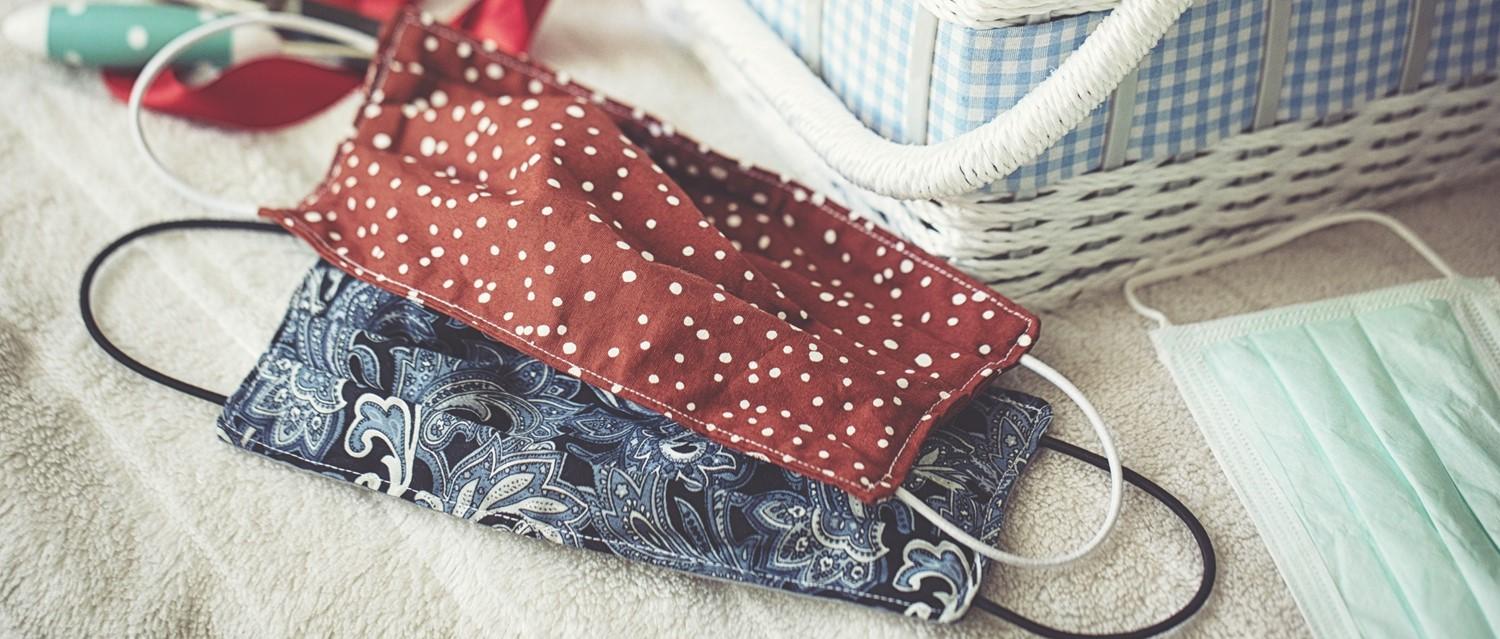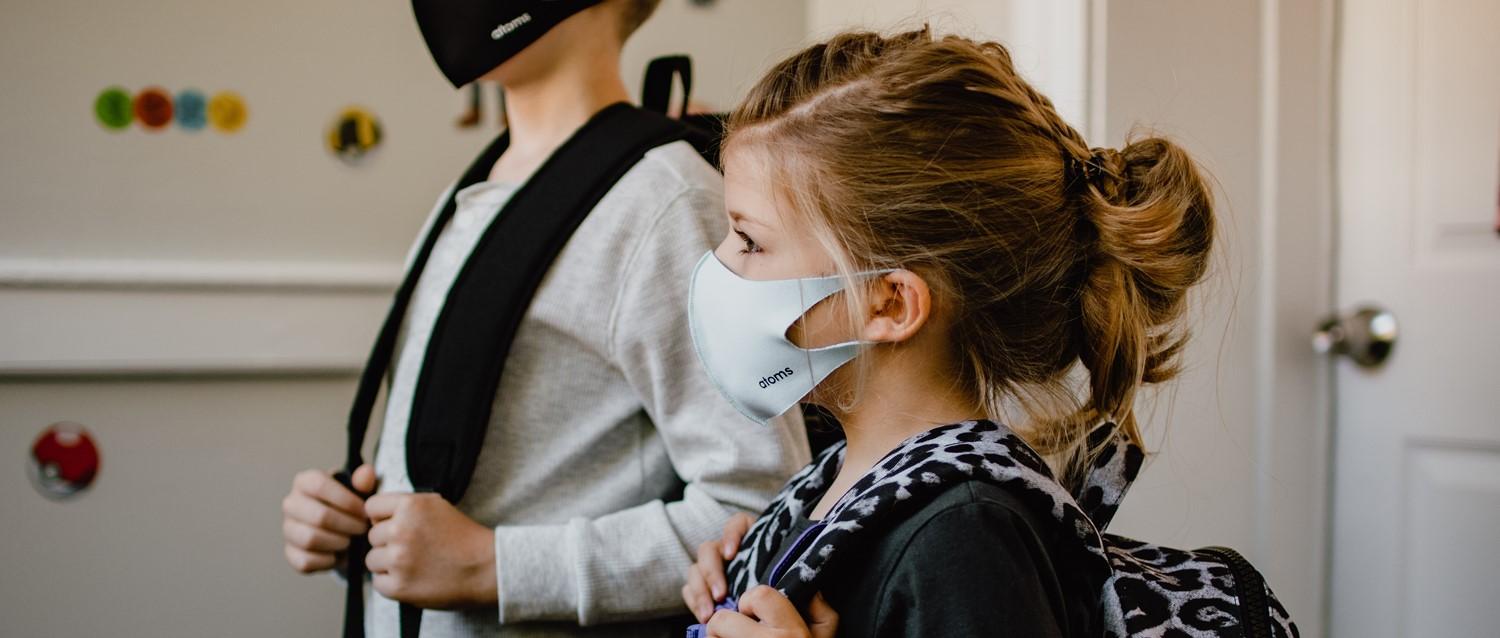
How to make face masks and coverings more comfortable
Peer reviewed by Dr Sarah Jarvis MBE, FRCGPLast updated by Lydia SmithLast updated 17 Jul 2020
- DownloadDownload
- Share
For those of us who don't work in healthcare, wearing a face mask can feel quite strange. But it's something we are all having to get used to at the moment, especially as face masks become compulsory in shops in England.
In this article:
Although necessary to help prevent the spread of COVID-19, face coverings can be pretty uncomfortable. So what can you do to make them easier to wear?
Face coverings are compulsory when using public transport or when attending a hospital as a visitor or outpatient in England. And from the 24th July you'll have to wear a face mask when in shops too, unless you have a medical exemption. The rules differ in different parts of the UK so make sure to check the rules in your area. Some businesses and organisations have their own rules for people using their services
"First, and most importantly, the public health rationale for wearing a mask is to protect others from your respiratory droplets which might be carrying the COVID-19 virus if you are infected but not showing symptoms," says Dr Scott Segal, who recently led a study into homemade masks. He is the chairman of anesthesiology at Wake Forest Baptist Health in North Carolina.
"The bad news is, masks aren't that comfortable, even for healthcare professionals. Particularly in warm weather, heavy cotton fabrics get uncomfortably warm fairly quickly," he adds. "I would recommend trying on a few different designs for comfort and breathability and selecting the most comfortable one that passes the 'light test'."
Continue reading below
Check the material
Medical face masks or respirators should be reserved for frontline healthcare staff and key workers. These are designed to protect people from germs in tiny particles emitted by sick patients.
A cloth face covering or mask works by stopping you spreading infections to other people, rather than protecting the wearer.
Cotton material is considered to have better ventilation and will trap less of the moisture that builds up from breathing and sweating. And as your face mask should have multiple layers, you'll want a material that doesn't restrict your breathing. Materials like polyester can trap moisture through its water-resistant properties, which can reduce the efficacy of the mask.
"Our work shows that some cloths are more effective than others, in terms of their ability to filter the smallest microscopic particles," Segal says.
He recommends caution with some designs that are comfortable, but make poor masks because you tend to breathe around them rather than through them. "An example is ripstop nylon (a thin, waterproof fabric), which is lightweight and very comfortable but which is impossible to breathe through," he adds.
One rule of thumb is to hold up the fabric to a bright light and see if the light outlines the individual fibres. "If it does, it's likely a less efficient filter," Segal says. "Electron microscopic pictures of the fabrics confirmed that the thicker yarn and denser weave of higher-quality cotton had fewer gaps between the fibres and likely made a better filter."
Make sure it fits snugly
A face mask should cover from the top of the nose - just below where glasses would sit - to the bottom of the chin. Although you want your mask to fit snugly around your face, you don't want it to be so tight that it hurts. Not only will you not be able to breathe well, you are likely to fiddle with it which reduces its effectiveness.
"It's also important for everyone to understand that a mask or gloves or other personal protection equipment are only as good as the user," says Rodney E. Rohde, a professor of clinical laboratory science and an infectious disease specialist at Texas State University.
"If they are touching them, not using them correctly - hanging them below the nose, etc - or contaminating them, then it is not helpful."
Wear your mask around your home before you go out to make sure you'll be comfortable wearing it for a long period of time.
Continue reading below
Try a tie-on mask
Elastic is often used to attach a mask to the face, but tie-on coverings can be more comfortable.
"Though it takes some getting used to, we find tie-on masks to generally make a better fit than ear loop masks," Segal says. "Everyone’s face is a little different in shape and size, and the ties lead to a more customised fit. This matters too, since a poorly fitted mask will lead to the wearer breathing around the mask rather than through it. That puts others potentially at risk."
Patient picks for COVID-19

Chest and lungs
Is the pandemic affecting children's development?
We are living in unprecedented times, and all of us are feeling the strain. In addition to their own worries and concerns, most parents are anxious for their children - how will lockdown affect them?
by Gillian Harvey

Chest and lungs
COVID-19
COVID-19 is an infectious disease caused by a virus that was first identified in December 2019 in Wuhan, China. This leaflet deals with the symptoms, causes and treatment of COVID-19.
by Dr Doug McKechnie, MRCGP
Try an 'ear saver'
Some find the ear loop design comfortable and if you can get a good fit, they work just fine. For other people, having a loop of elastic or fabric around the ear can be extremely uncomfortable.
"There is also a device some call an 'ear saver' that goes behind the head and grabs the ear loops," Segal says. "This not only takes pressure off the ears, but lets you tighten the mask to fit you better."
Continue reading below
Make sure the mask fits with your glasses
As we wear our masks, warm breath escapes from the top of the mask and lands on the cooler lenses of our glasses. When that happens, it creates condensation or fog. There are several steps you can take to tackle this problem, though.
"Some designs incorporate a flexible metal strip across the top that can be moulded to the bridge of the nose and makes a more stable fit and helps prevent fogging of eyeglasses," Segal adds.
You could also sew a pipe cleaner into the top of your mask, or tape down the top using surgical tape. Just be sure to test the tape on your skin first, to make sure it doesn't cause irritation. It's also possible to pull your mask higher on your face and use the weight of your glasses on top of the mask to block the flow of air.
Wash your mask
When the weather is warm, masks can cause your face to sweat which creates moisture inside the face covering. Once it is wet, it is no longer useful. If you are out and about all day, you may want to bring an extra mask with you.
And if you'll be taking masks off and on (eg, travelling via public transport to and from a destination where you don't have to wear a mask), put your used mask somewhere safe and separate (for example, in a plastic bag) and swap to a fresh one the next time you have to wear it.
When removing your mask, always make sure to avoid touching the mask or your face. Remove it using the ties or straps and dispose of it safely or, if it's reusable, keep it somewhere separate until you're able to wash it. Remember that your face mask may be contaminated and you can transfer those germs on to your hands if you touch the front of it. Touching your face to pull it off can transfer germs on to your face, where they can easily get into your body through your eyes, nose or mouth.
You should wash your mask on at least a 60°c wash using your normal detergent to kill any virus or bacteria which may be on it. You should remember to wash reusable masks frequently too.
Article history
The information on this page is peer reviewed by qualified clinicians.
17 Jul 2020 | Latest version

Ask, share, connect.
Browse discussions, ask questions, and share experiences across hundreds of health topics.

Feeling unwell?
Assess your symptoms online for free